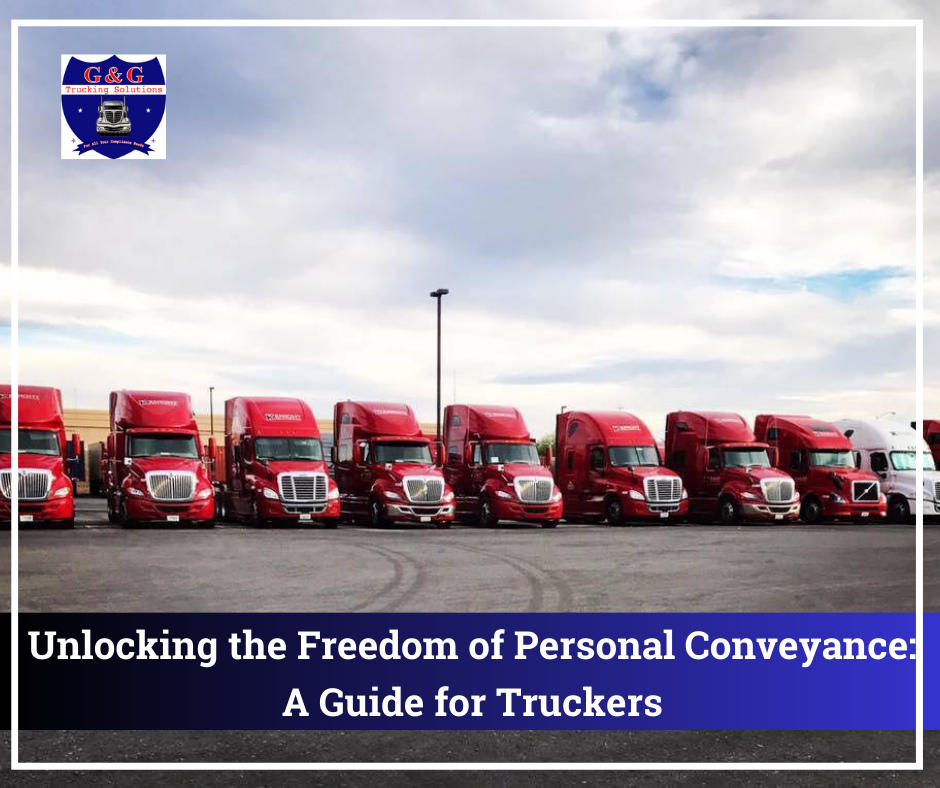
In the vast world of commercial trucking, where schedules dictate movements and destinations, there exists a slice of liberty known as personal conveyance. It’s the chance for truckers to momentarily step away from the rigors of duty and embrace a moment of personal freedom. But what exactly constitutes personal conveyance, and how can truckers leverage it within the bounds of regulations?
Let’s embark on a journey to unravel these questions.
*Understanding Personal Conveyance*
Personal conveyance is the lifeline that allows truckers to use their commercial motor vehicles (CMVs) for personal reasons while off-duty. It’s a respite from the constant demands of work, granted that the driver is entirely relieved from responsibilities by the motor carrier. Crucially, personal conveyance doesn’t absolve the driver or the carrier from their duty to operate the CMV safely. Instead, it offers a brief interlude for personal errands or restorative rest.
*The Boundaries of Personal Conveyance*
FMCSA delineates the parameters within which personal conveyance operates. It’s permissible even if the vehicle is laden, as long as the cargo isn’t being transported for the commercial benefit of the carrier at that time. However, carriers reserve the right to set more restrictive limitations on personal conveyance, such as distance constraints or outright bans.
*Examples of Personal Conveyance*
The spectrum of personal conveyance activities is broad, encompassing various scenarios:
- *En Route Lodging to Amenities*: Traveling from lodging to restaurants or entertainment spots.
- *Commuting*: Journeying between home and the terminal, or between work sites and home, ensuring adequate rest periods.
- *Rest after Loading/Unloading*: Moving to a safe location for required rest after cargo handling.
- *Safety Officer’s Request*: Fulfilling a safety official’s request to move the vehicle during off-duty hours.
- *Personal Property Transport*: Transporting personal belongings while off-duty.
- *Authorized Offsite Work Travel*: Returning home after offsite work completion.
*Exclusions from Personal Conveyance*
Not all movements fall under the umbrella of personal conveyance:
- *Operational Enhancement*: Any movement aimed at improving operational readiness, like bypassing rest stops.
- *Continuation of Business Trip*: Continuing a trip to fulfill business purposes, including bobtailing or repositioning.
- *Passenger Transport*: Driving with passengers aboard, unless off-duty drivers are traveling to a common destination.
- *Maintenance Transport*: Traveling for vehicle maintenance purposes.
- *Post-Exceeding Maximum Duty Rest*: Driving after being placed out of service for exceeding maximum duty periods.
- *Terminal Travel*: Driving to the carrier’s terminal post-loading or unloading.
*Maximizing Personal Conveyance within Regulations*
For truckers, personal conveyance is a cherished allowance amidst the rigidity of duty schedules. By understanding its scope and limitations, drivers can navigate their off-duty moments more effectively. It’s not just about seizing a moment of freedom; it’s about doing so responsibly, ensuring safety, and aligning with regulatory guidelines.
*Conclusion*
Personal conveyance isn’t merely a perk; it’s a crucial aspect of truckers’ lives, offering a semblance of normalcy in an otherwise demanding profession. As regulations evolve, understanding the nuances of personal conveyance becomes paramount. It’s the key to unlocking moments of respite and autonomy within the structured world of commercial Trucking authorities. So, the next time you embark on a journey off-duty, remember the freedom of personal conveyance and the responsibility it entails.




